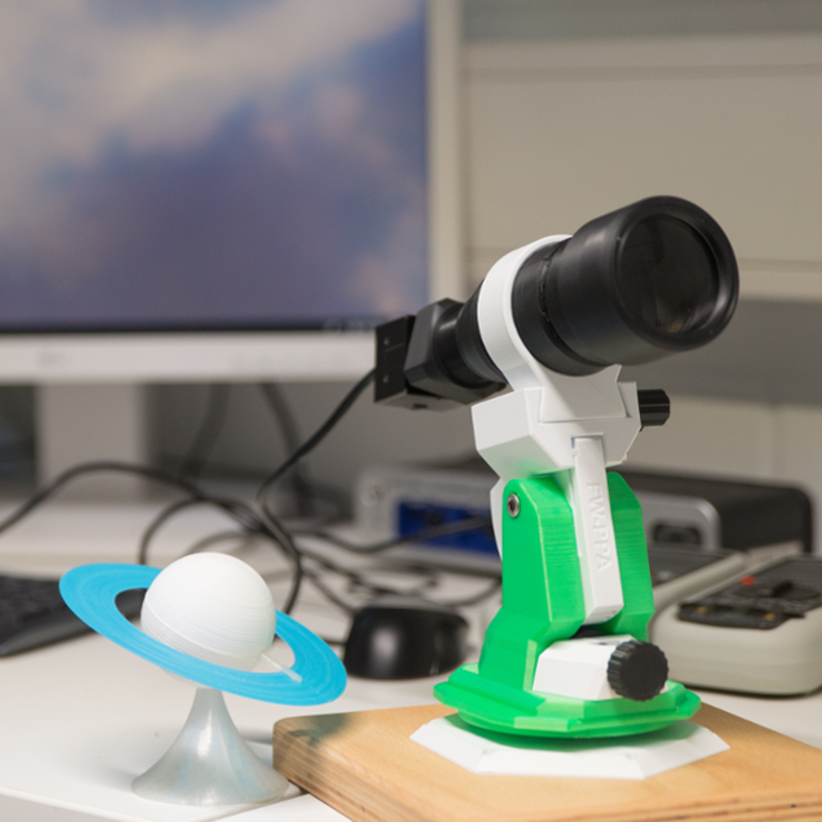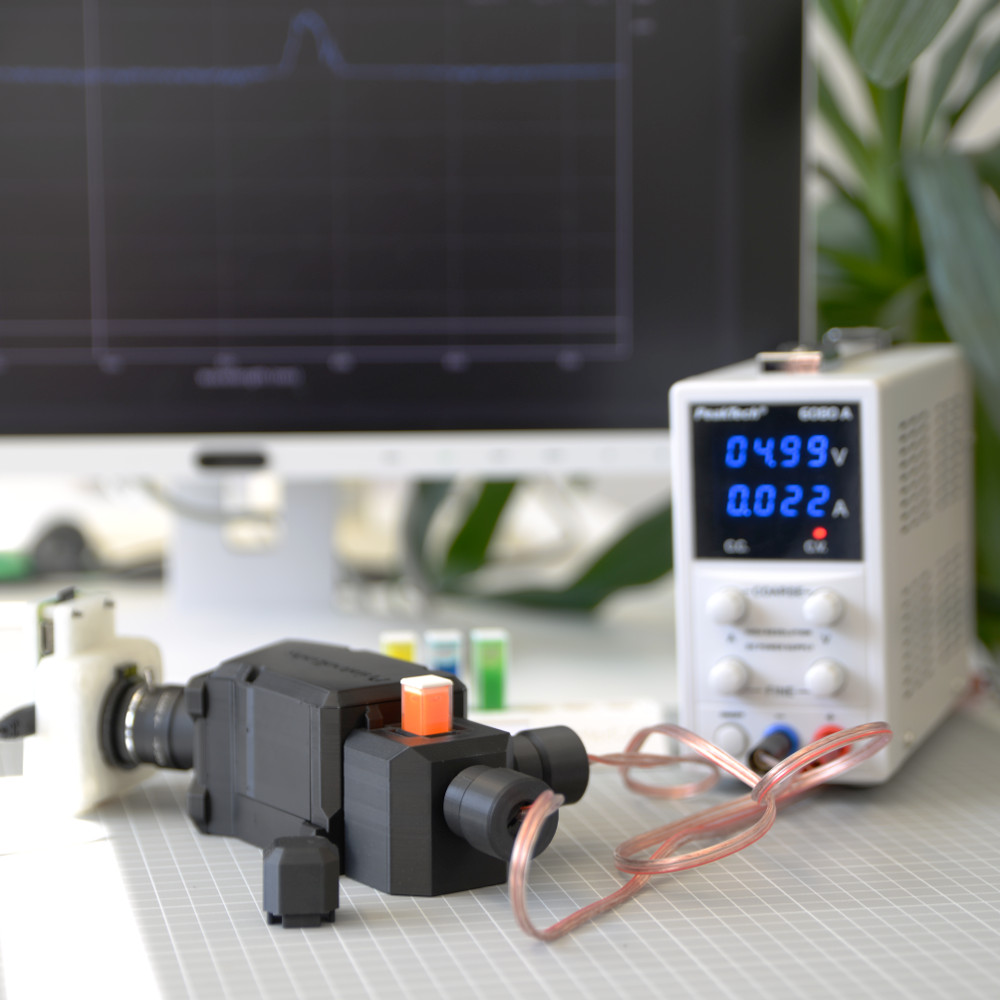Here you will find a growing collection of our models for various STEM fields. These cover more complex setups like telescopes, a microscope or USB spectrometers, but also basic components, for example for basic mechanics and optics experiments.
To get active yourself and reproduce an experiment presented by us or design your own, all components developed by us can be rebuilt and used by yourself. For this purpose, in addition to the required 3D models (STL format) for the 3D printer and a parts/shopping list, we also provide short instructions or instruction videos so that the assembly can be done as quickly and easily as possible.
License
All models offered for download are subject to the Creative Commons Attribution-NonCommercial-ShareAlike (CC BY-NC-SA) license.
(Opto)mechanics
If you would like to set up your own experiment, you will find the basic components here, such as
- Light sources (accessories) for lasers, LEDs, RGB elements
- Polariser, lens, mirror, sample and filter holders
- Optical bench components and projection screens
- Adapters, camera holders
- detectors and much more ...
The modular design offers a practically unlimited number of possibilities. Click here for the models

Microscopy
The microcosm offers fascinating opportunities to dive into and explore the complex world of the smallest organisms or cells, but also crystal growth or atomic properties of the crystal lattice structure can be studied. The possibilities are practically limitless. For this purpose, there is our microscope to build yourself! In addition to the mode of operation and the beam path, you can easily learn about relevant parameters such as the magnification, the resolving power of a microscope objective, and also different types of illumination. Since our microscope has background-free imaging methods such as darkfield and polarization contrast microscopy in addition to the usual brightfield illumination, initially invisible phenomena can be studied. Matching accessories are of course also available!

Astronomy and accessories
The starry sky fascinates with its infinite width and distant stars, interstellar nebulae or galaxies. But also within our solar system there is already much to discover like sunspots, craters on the moon or the four largest moons of Jupiter. To catch first glimpses (also terrestrial) here is our 3D-printed observatory, consisting of different telescopes, adjustment accessories and a small mount to build yourself! Here you can learn about the optical path and the magnification of the Fraunhofer refractor as well as cosmic quantities like the apparent size of astronomical objects or the working principle of a parallactic or azimuthal telescope mount. In addition, there are many accessories, illustrative material and teaching aids on the subject of astronomy.

Spectroscopy
First quantum phenomena can be demonstrated or illustrated particularly effectively with light and waves. The grating spectrometer we have developed, in which the wave character of light is used for spectral splitting at the optical grating, combines both. In addition to the technical implementation, it also offers the possibility to observe and quantitatively investigate quantum mechanical measurements such as the photoluminescence of dyes. Our spectrometer achieves a resolution of about 1 nm in the visible wave range of 400 nm - 700 nm, which means that even the absorption lines of hydrogen in the emission spectrum of our sun can be measured.
